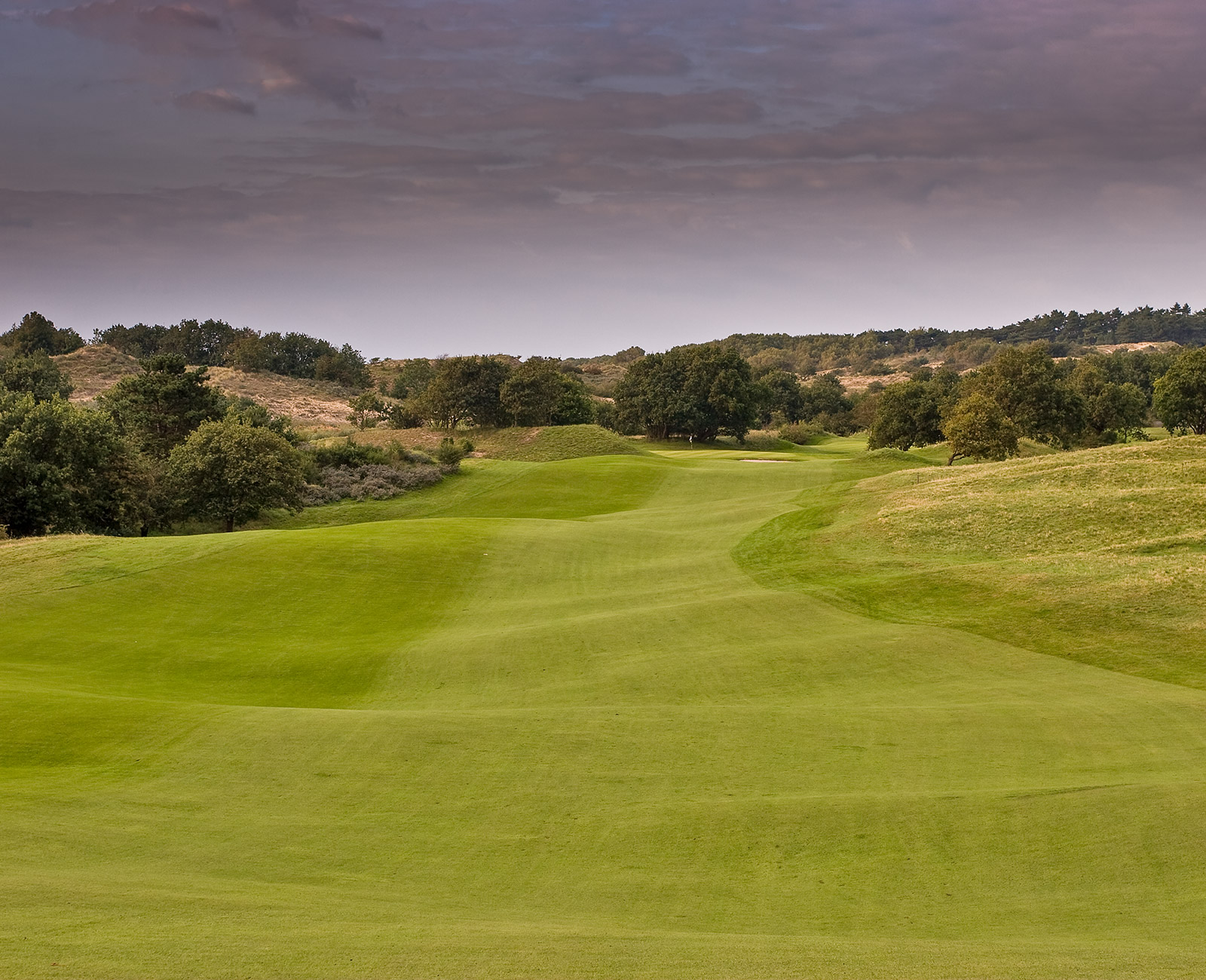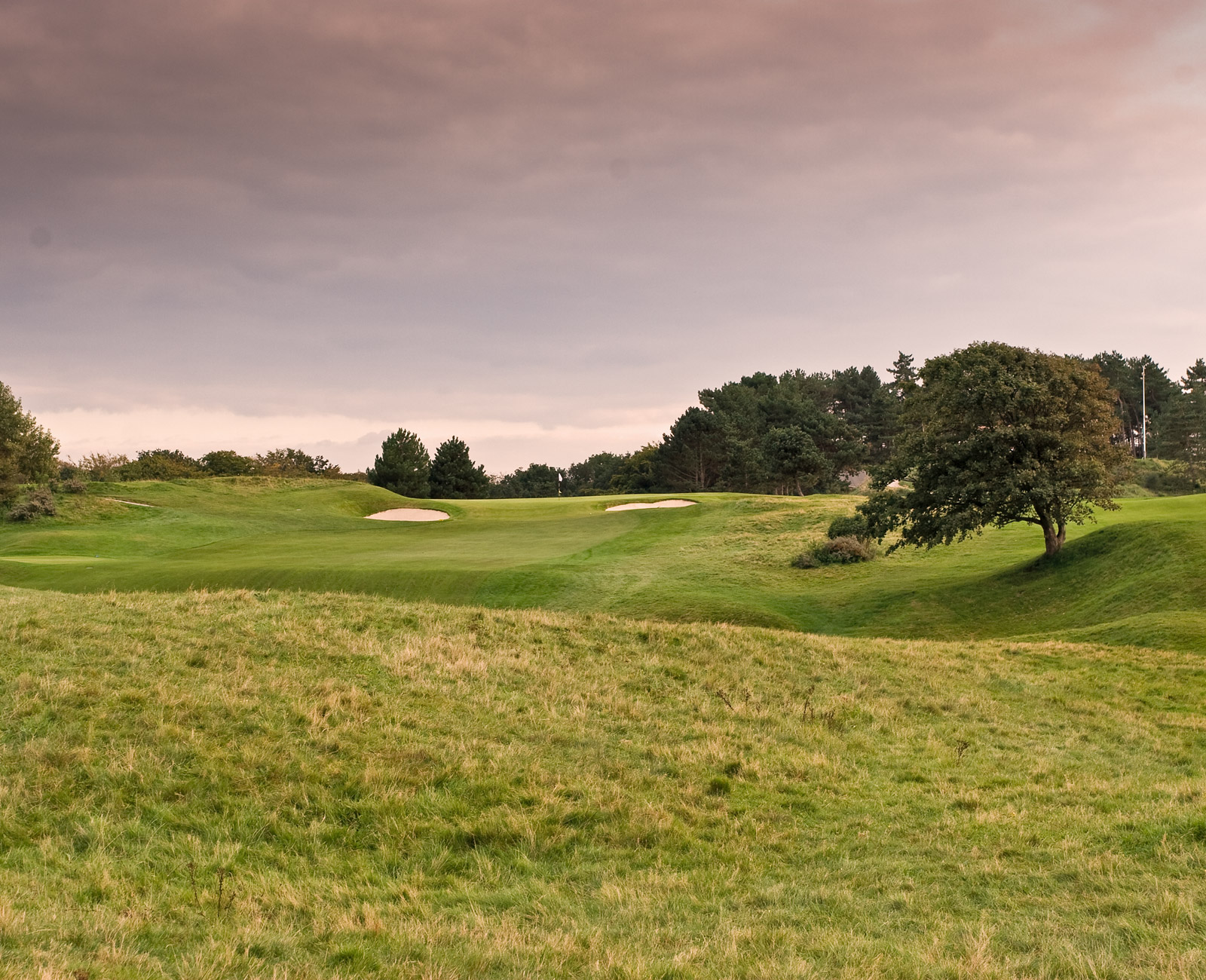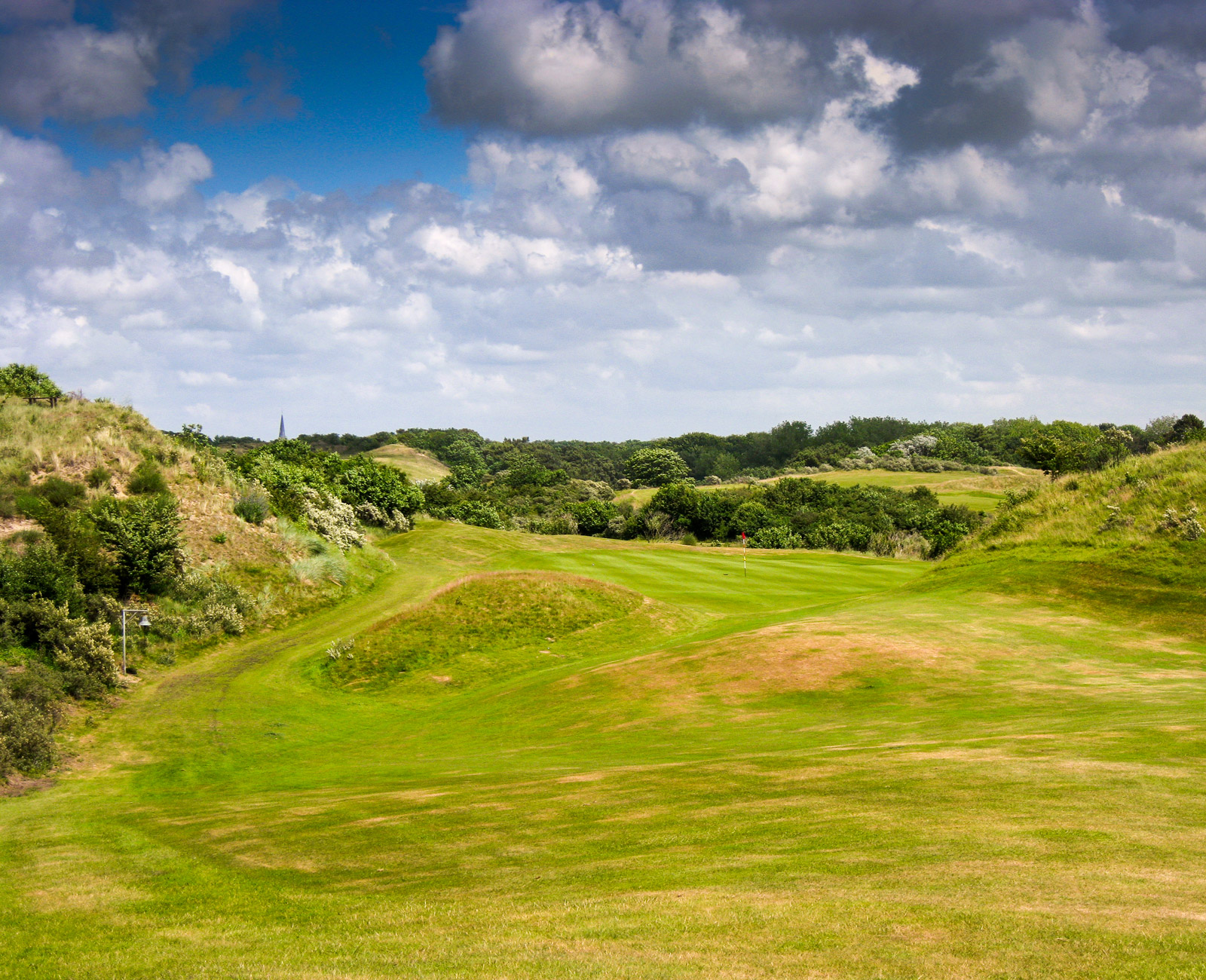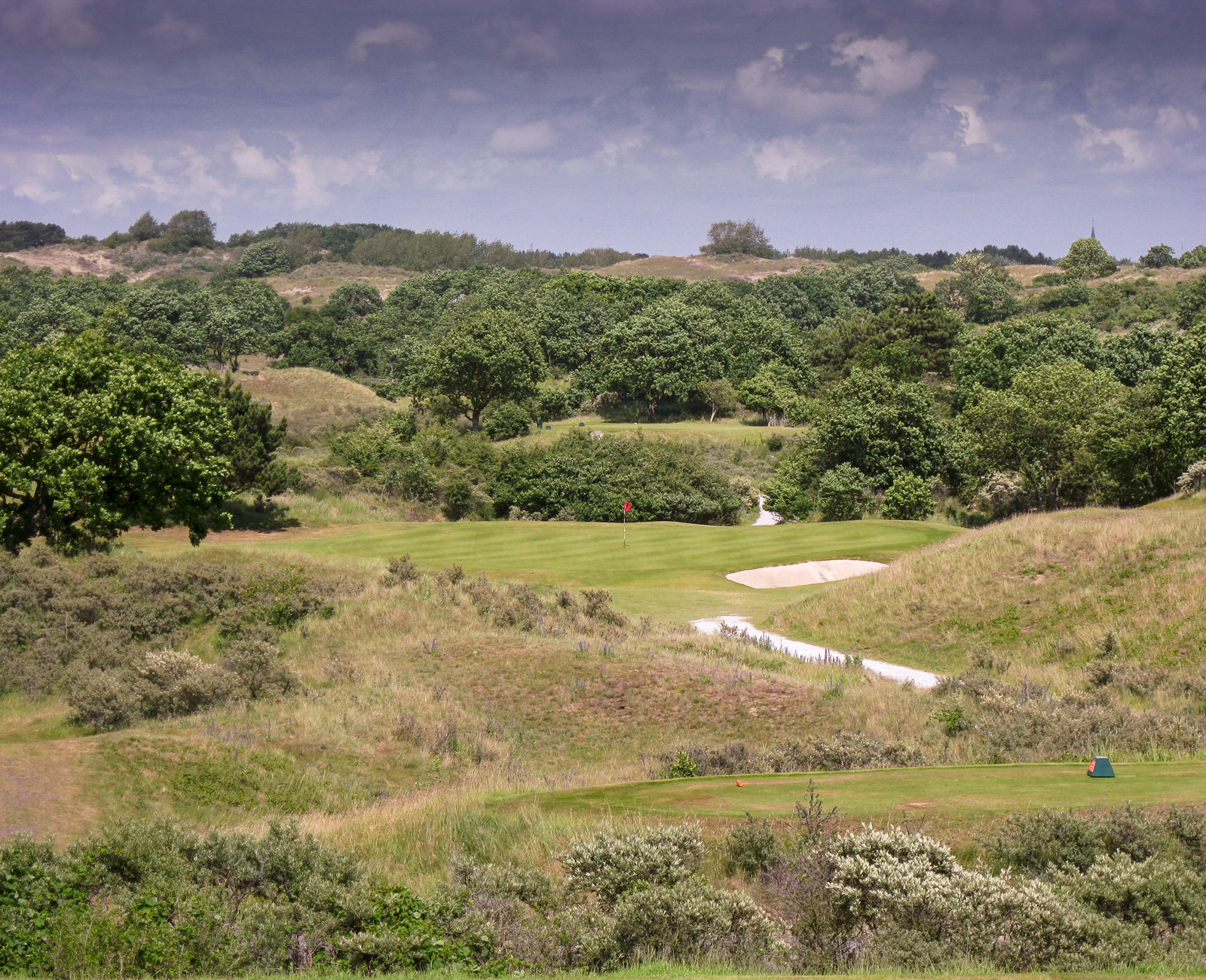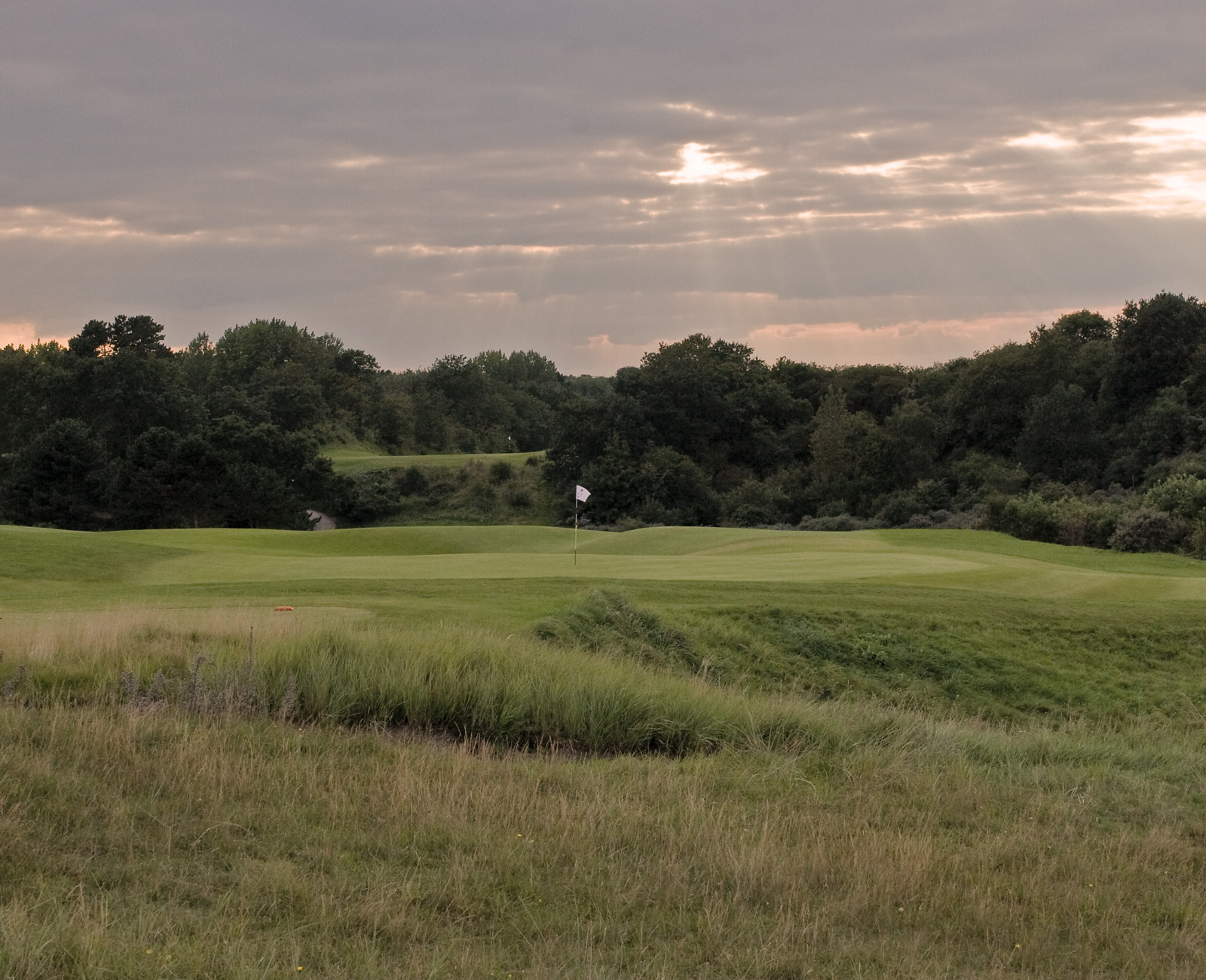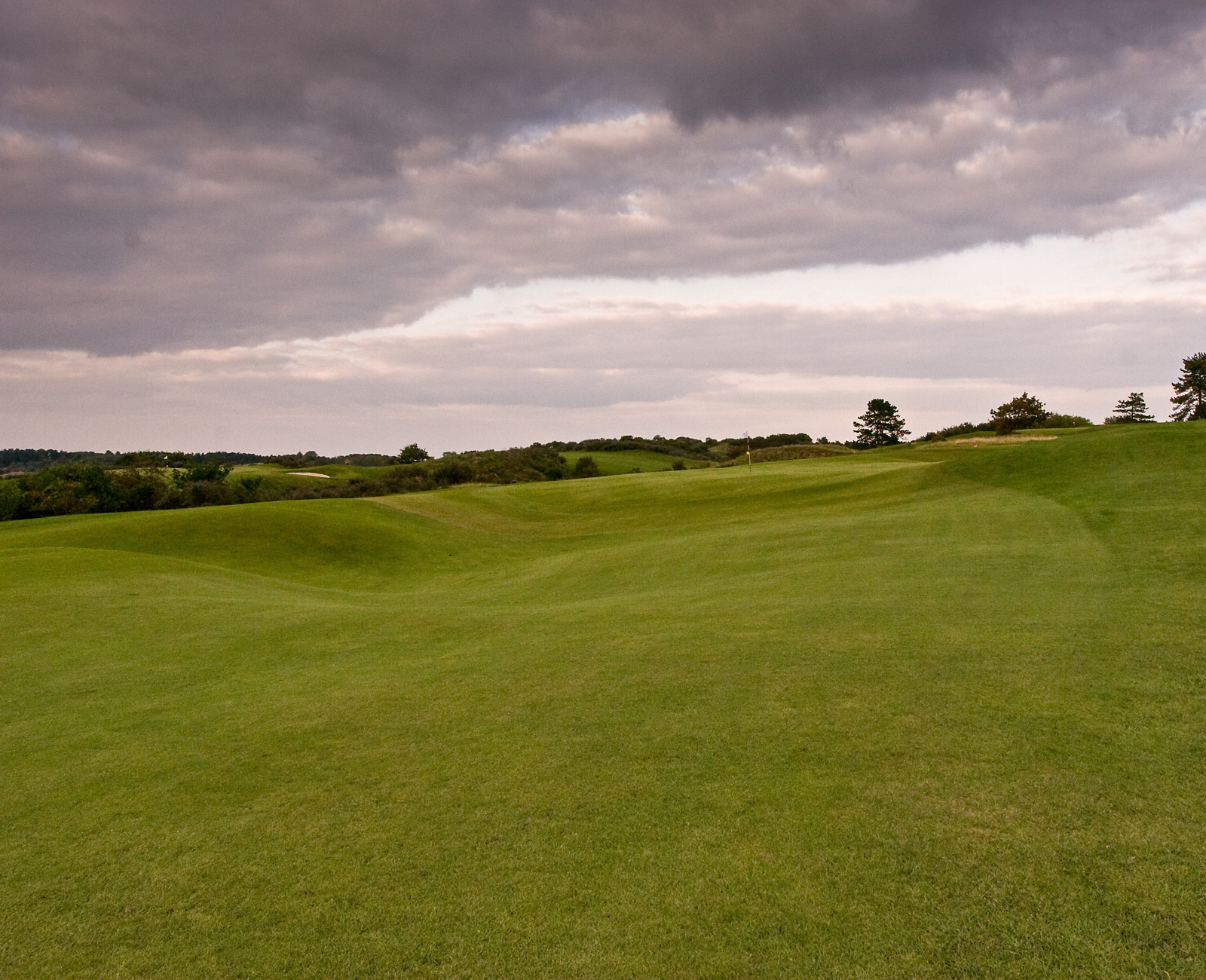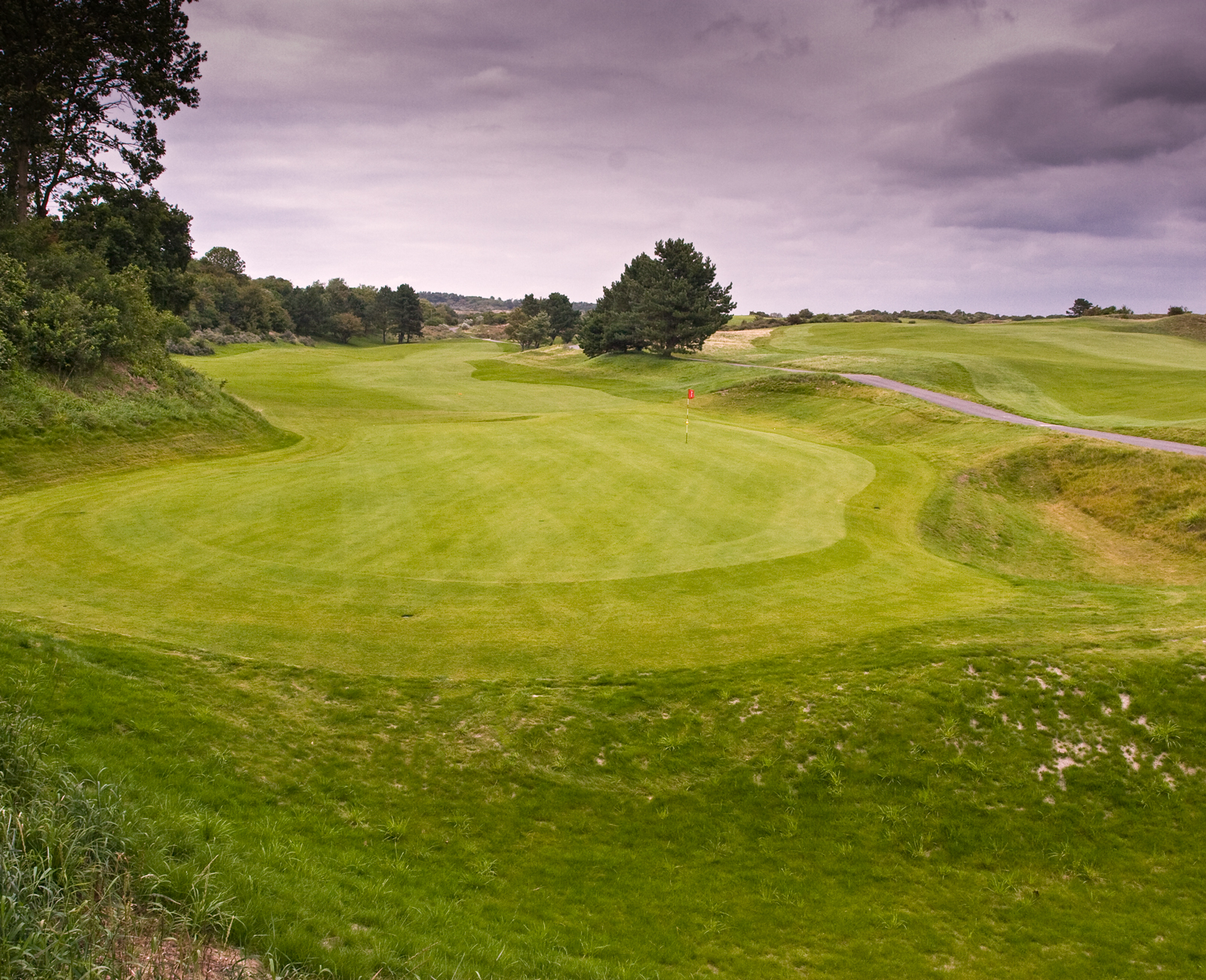A full restoration of a Colt/Alison classic
Royal Hague is set in what must be one of the most spectacular dune landscapes a golf course ever got built in. When it was built in 1938 (it was one of the last courses that was built by Colt & Co before the war) the surrounding dunes were relatively barren – the course was
nicknamed ‘the Pine Valley of Europe’ – so they decided to transport fertile, clayish soil on to the greens, tees and fairways.This worked fine in the following decades and allowed for golf to be played in this infertile environment, but it later made the greens and fairways on this linksy course too soft in winter. The old clay layer had sunk so deep after 70 years of topdressing on the greens that it had become an impenetrable layer that could not be broken down with normal maintenance equipment.
The club followed the advice of leading agronomists to rebuild all 18 greens. I was delighted to provide the architectural and Colt/Alison expertise on this project. My goals were two-fold: firstly, to restore the 13 greens that were still original as accurately as possible; secondly, to create putting surfaces for the five greens that had been changed or moved over the years, so they’d look and play like original Alison greens. To this end, all the greens were painstakingly measured in 3D, hereby allowing us to rebuild them in exactly the same form. We copied his large, sand-faced green-side bunkers by studying old aerial pictures of the course. And we restored the grassy hollows he carefully positioned around the greens; these had become overgrown and filled-in over the years.
Restoring the original greens was rewarding, but the highlight of our project, however, was designing and building the new ones. The first of the new greens was on the 2nd, which went from a small surface to one 50 per cent larger to give the player hitting into the green with the longer shot more room to land, while making the longer hitter’s ‘blind’ wedge shot into the green an even harder proposition. The 7th hole was also too small, so we lowered the green surface by about a metre, which created just enough extra space on the right side to make the total green surface large enough. The 13th was out of character, with a two-tiered structure and double-flanking bunkering left and right of the green – clear indications it wasn’t an original green. So on this difficult par 4 usually played into the wind, we gave more space to land a long-iron and to improve the odds of balls staying on the surface. We moved the green back, making it significantly longer in the process, while the entire left side and back is defended by three, huge grassy hollows that gather most of the less-accurate shots.
The 16th is a short par 4 and the green had a large pine tree right next to it. Many members liked it, but it wasn’t on the original design and was a perennial maintenance nightmare. The tree therefore had to go, to be replaced by a new bunker. The valley before the green was widened, so shots into the green that were short, including drives, would roll all the way down to the right of the fairway. The final par 3, the 17th, is the last of Royal Hague’s new greens. The previous green was
poorly visible from the tee and only yielded a few interesting pin positions. We wanted the front part of the green to slope pward to enhance visibility from the tee and the back-left part to be lower than the top to create a hard-to-hit target. We also wanted three bunkers, each with various degrees
of difficulty and flashed-sand faces. Low, grassy hollows behind and to the right of the green were
also created while we allowed a less-risky ‘bail-out’ area in the front left of the green.
The putting surfaces are now back to their original high standards and present firm and fast greens and the club now possesses one of the most exciting inward nine holes one could ever hope to play. The ‘sleeping beauty’ that Alison created has truly woken up.
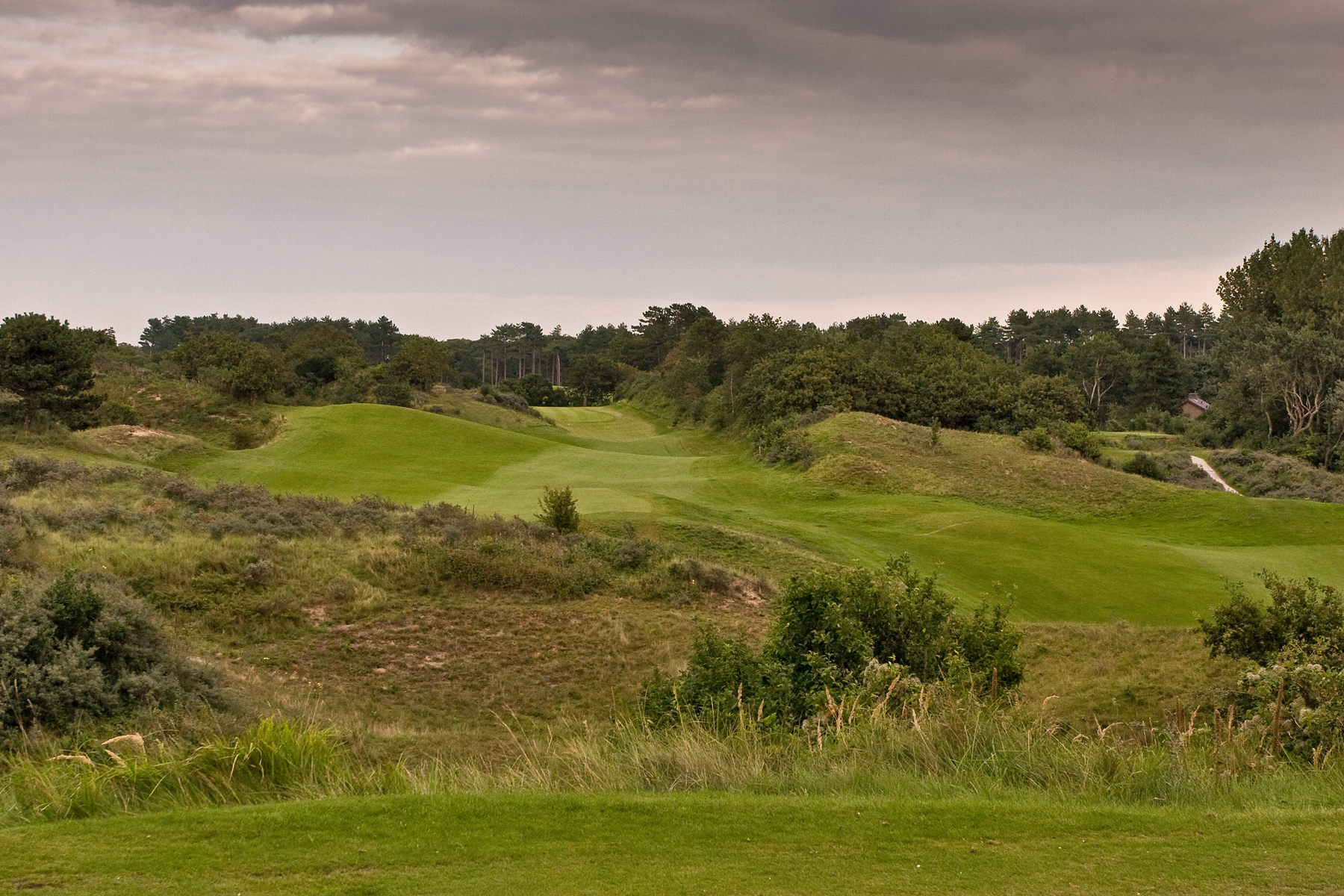
As discussed above, our initial work at Royal Hague involved the restoration of the greens. After our succesful completion of this restoration project, the club asked us to write a long term course plan to further optimise the important elements of the course such as the tees, paths, mowing lines, bunker construction, vegetation management and irrigation. The long term plan was presented to the mebership and after it was accepted the club has started working on inplementing the recommended steps during the last number of years.
The first step was to renovate all of the tees and many of the paths that connect greens and tees. Many of the tees were too large and too raised, making them fit in poorly with the existing dune landscape. We therefore made more sperated and smaller tees which belnded better in the ragged dunes of Royal Hague. In terms of the paths the key challenge was to make them safer and less steep in places, not an easy task in the sometimes quite extreme landforms that occupy Royal Hague. Other goals were to minimise the number of paths, hide them visually wherever that could be done and where possible contruct them of grass. In the last two years all the bunkers have been rebuilt using a liner called Bunkermat, to stop the continious wash-outs of the sand faces. Finally we have also rebuild the greensurrounds, the bunkers and the last 100 meters of hole 18, bringing it more in line with the other green complexes.
Fans of Royal Hague can be found in many places around the world. There is Ran Morrissett, the founder of GolfClubAtlas.com, the world's leading site on golf architecture, who after his visit to the course stated that for him Royal Hague is the best course on the Continent.
Word is out on the transformation that Royal Hague has gone through, largely under the direction of Dutch golf architect Frank Pont. Royal Hague gets my vote as continental Europe's best course. Personally speaking, I have yet to see fifty courses that I would rather play than here.
Another fan is Adam Lawrence, editor of the influential Golf Architecture Magazine, for whom Royal Hague ranks as the best golf course on the continent together with iconic Morfontaine.
Kennemer and Noordwijk are both terrific, but Royal Hague has better terrain and greens and more interesting golf. And now, after an extensive renovation led by Dutch architect Frank Pont, it is better than ever..... The new 17th green typifies Pont’s work at Royal Hague: he has taken a masterpiece, and given it a subtle, sympathetic facelift, and made it better still.
All this praise has also not gone unnoticed at the rankings of important magazines and websites such as Golf Magazine (USA), Golf World (UK) and top100golfcourses.com. Currently Royal Hague is after Morfontaine the highest ranked European course in Golf Magazine's World Top 100 at position 77.
Below are several links to articles and reviews about our work at Royal Hague:
